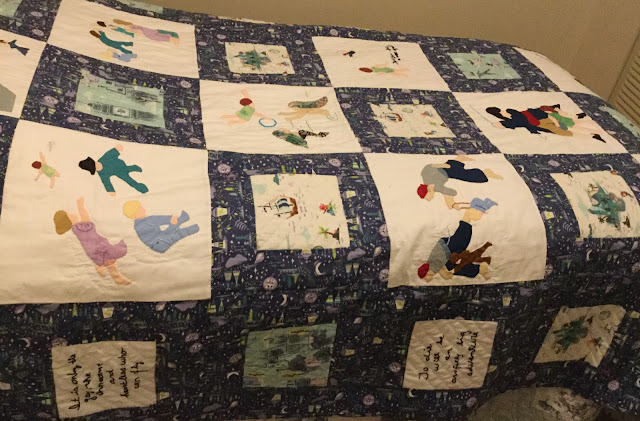The Winter of the Witch is Katherine Arden's third book in the Winternight Trilogy. I reviewed the first books The Bear and the Nightingale and The Girl in the Tower here.
I was quite taken by the 14th c Rus' setting, the Russian fairy-tale-inspired characters, and the female heroine journey. Arden studied Russian in Moscow, so reading the books the reader is immersed in Russian history and traditional culture.
The series, in essence, is about a young girl growing up, discovering her abilities and place in the world, at odds with societal expectations. Historical Russia becomes a fairy-tale kingdom where both men and devils must fight to survive.
The Bear and the Nightingale
In 14th c Russia, Vasya, who can talk to horses and hear the household spirits, dares to claim the right to make her own fate. Against her family's desires and the demands of society and church, she resists the life laid out for her. Even the pagan gods, whose power is slowly fading, try to harness her for their good but she will not be chattel to anyone. She fights the evil spirits that threaten her family, protected by the Winter King Morozko. When the spirit of Death in the form of a monstrous bear attacks their community, Vasya is blamed and labeled a witch by the priest Konstantin. Her choices limited to marry, enter a convent, or be killed as a witch, Vasya dresses as a boy and goes out into the world with a horse from Morozko, the unworldly stead Solovey, or Nightingale.
The Girl in the Tower
In the cruel winter, dressed as a boy, Vasya flees her home where she was driven out as a witch. After battling a Tartar army she finds refuge in a city where she is reunited with her brother Sasha, the valiant monk-warrior and childhood friend of the ruling prince. Her exploits impress the prince and she leads his band to track down the Tartar marauders. Vasya accompanies the retinue to Moscow and is reunited with her sister. Also in Moscow is the tormented Konstintine, the priest whose misguided faith drove him to persecute Vasya in her hometown. The story includes a twisted plot of false identities, a heritage of women who can communicate with the spirit world, and a riveting epic battle.
The Winter of the Witch
This installment brings the epic story to an exciting climax as the Rus kingdoms are threatened by the Mongol Golden Horde, and the chyerti fight for survival as they are forgotten as Christianity spreads.
Vasya learns she is descended from a line of witches and pledges to help the chyerti coexist with humanity. Central to the continuing story is Vasya's monk-warrior brother Sasha, their sister Olga and her daughter, the nascent witch Marya, the Rus' Prince, and the misguided Christian priest, Konstantin, whose lust for power overrides his faith.
Vasya's demon mentor Morozko The Winter King, a god of death, and his brother Medved, the Bear, god of chaos, have been enemies. To protect her Rus' kinfolk, Vasya's task is to bridge their gap and make them ally with humans.
In the Author's Note, Arden states that from the start she planned to end the trilogy at the 1380 Battle of Kulikovo on the Don River between the Grand Prince Dmitrii Ivanovich and the Tatar temnik Mamai. There was a historical warrior-monk who battled a Tartar warrior as in the novel, and the Grand Prince did trade places with a boyar so he could fight incognito.
I sped through The Winter of the Witch, a compelling read. There are two epic battles. As I noted in earlier reviews, the myth of the female hero continues as Vasya receives help and magical helpers. I noted repetition in the story, stock images or phrases, in the style of Epic poetry.
The series would appeal to readers who like strong female characters battling for freedom and those with an interest in fairy tales, Russian folklore, and fantasy.
I received a free ebook from the publisher through NetGalley in exchange for a fair and unbiased review.
The Winter of the Witch: A Novel
by Katherine Arden
Random House Publishing Group - Ballantine/Del Rey
Pub Date 08 Jan 2019
ISBN: 9781101885994
PRICE: $28.00 (USD)

















































